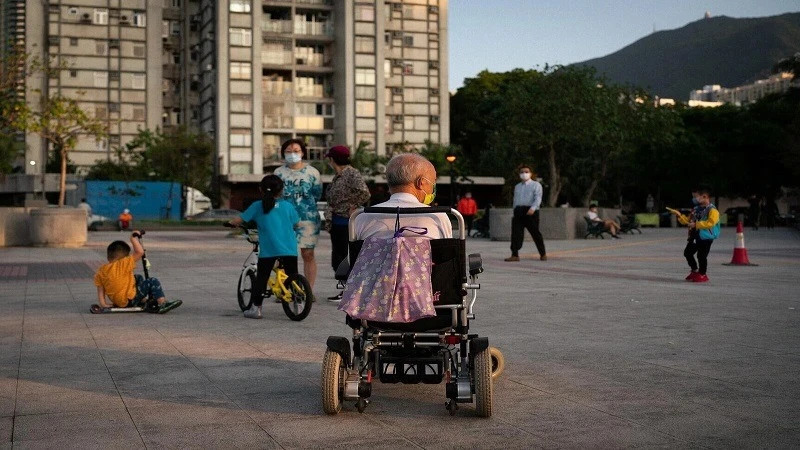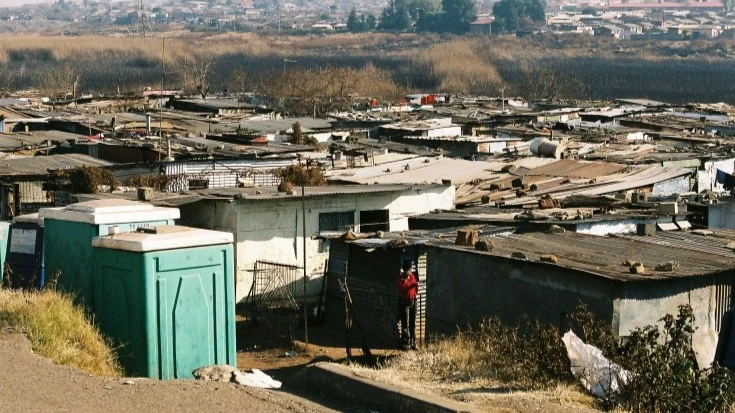The future of the care economy relies on collaboration and a ‘care mindset’

THERE is one investment that yields incremental interest in the long term, and that is people.
There are 8 billion of us (and counting), all of whom need looking after for the better part of our lives. Food production, child rearing, community clinics, sanitation, schooling, physiotherapy, telehealth and retirement homes, among many other processes and relationships, make up the vast and complex global care economy.
However, care goods, services, and infrastructure are insufficient, inaccessible and unaffordable to large chunks of the global population. Furthermore, the lack of recognition for care as a valuable component of social and economic life is holding back care workers and caregivers: from having decent work, accessing skilling opportunities, engaging without prejudice in care activities, participating fully in community life, and even from caring for themselves.
A new white paper, The Future of the Care Economy, authored by the World Economic Forum’s Global Future Council for the Future of the Care Economy, now provides an overview of the state of the care economy. It also offers a base framework for stakeholders to start working together to make care affordable, accessible, sustainable, good quality, and most importantly, an economic priority for all.
The care gap in the economy
Many economies have relied for too long on minimal, precarious and unfair care arrangements.
Based on 2022 US Bureau of Labour Statistics data, parents will have spent just over 750 hours per year caring for children under six – the equivalent of 4.6 standard work weeks or having a 16-student credit unit workload at a US university. In Colombia, women invest more time completing everyday household chores than in paid work (8.3 vs. 7.7 hours per day, respectively).
When government and businesses join efforts – whether to improve workforce conditions, help bridge the childcare gap, or shape urban spaces so an entire family’s needs can be met within a single block – they are quite literally transforming the lives of those who provide and receive care.
Future-savvy stakeholders are not passing up on the opportunity to invest in care.
Businesses are retaining and gaining talent by offering multi-generational care benefits given their growing relevance and attractiveness, particularly in economies with ageing populations, or without social protection networks.
Governments are future-proofing their economies by championing care as an economic priority and expanding their normative framework to include the right to care amid demographic, green and technological transformations.
Taking stock
The Future of the Care Economy highlights some of the key challenges care systems face.
The first is an overreliance on unpaid care. Close to two billion people in the world work as full-time carers but without pay. This represents 9 percent of global GDP, according to data from the International Labour Organization. In regions like Latin America, the share is estimated to be up to a quarter of regional GDP.
The majority of care work is undertaken by women, with migrant women emerging as the face of the global care economy. Globally, women provide 2.5 times as many hours of unpaid care as men.
Another factor is the precarity of the paid care sector. Despite rising demand for care, wages in the care sector are low. In countries like the UK, care workers can be paid wages lower than 80 percent of the country’s entire workforce.
In the US, between 1990 and 2017, carers’ wages rose by just 12 percent when wage growth in other sectors was four times as much, the white paper reports.
At the same time, there is a gap in available care provision which can hold back unpaid caregivers from developing their skills and accessing employment opportunities, for example, parents caring for young children.
The International Labour Organisation estimates that the childcare policy gap leaves 9 in 10 parents having to seek alternative care themselves -- a situation that leads to primary caregivers, many of whom are women, to drop out of the workforce.
Care as a growth engine
By 2030, the number of people age 60 and older will increase by 40 percent, and by 2050, it will double, according to the World Health Organization. This demographic shift will add to the already existing care access gap, creating more demand for care workers.
Care jobs, despite their precarious nature, are becoming increasingly important as automation forces other workers to reskill.
According to the Forum, two factors are essential to turning health care into a growth engine: greater public spending and more private investment.
Based on a study of seven Organization for Economic Cooperation and Development member countries, the report indicates that investing 2 percent of the GDP in the care industry could increase overall employment by 2.4 percent to 6.1 percent and create close to 22 million jobs. This is double what the same investment in construction would achieve.
Alongside public-sector commitment, there is also an onus on private companies to help shape the future of the care economy. More companies offering care benefits for their employees will not only drive growth in the care sector but also lower sickness, absenteeism and related productivity losses for businesses.
Reimagining care networks
Given the complex nature of care services, there is a need for collaboration among government, businesses and communities to overcome different challenges that global care systems face.
To date, these disparate stakeholders have largely acted in isolation, and their links must be strengthened to forge a conjoint, proactive approach to care, so that it can become a force of prosperity and growth, the Forum says.
Investing in structures and processes that deliver quality care in the future will be vital. This includes enhanced responsiveness to the needs of carers and those cared for, ensuring a high quality of caregiving, the sustainability of the systems put in place as well as equity and shared responsibilities.
The future of the care economy also explores new care models and practices for reshaping and bolstering the care economy. These encompass enhanced national-level care systems as well as care frameworks for cities or conurbations and community-led approaches such as cooperative childcare facilities.
However, businesses should also take greater responsibility in the care economy, such as investing in care provision, and contributing to technology innovation – in digital care for example.
But this model for restructuring and enhancing the care economy can only be achieved through collaboration and with a prevailing ‘care mindset’, it reminds – upholding care as a priority in the economy, while ensuring equitable participation and fair compensation for care workers.
Top Headlines
© 2024 IPPMEDIA.COM. ALL RIGHTS RESERVED











![The CEO of Flightlink Limited Mr. Munawer Dhirani and DTB Tanzania CEO, Mr. Ravneet Chowdhury [center] during the unveiling ceremony of the 72-seater ATR 500 aircraft over the weekend. Other officials present at the function are Chief Operating Officer.](https://ippmedia.com/storage/post-feature-images/01J75Y6DM8PY93SGFZD4GYPXJ4.webp )













